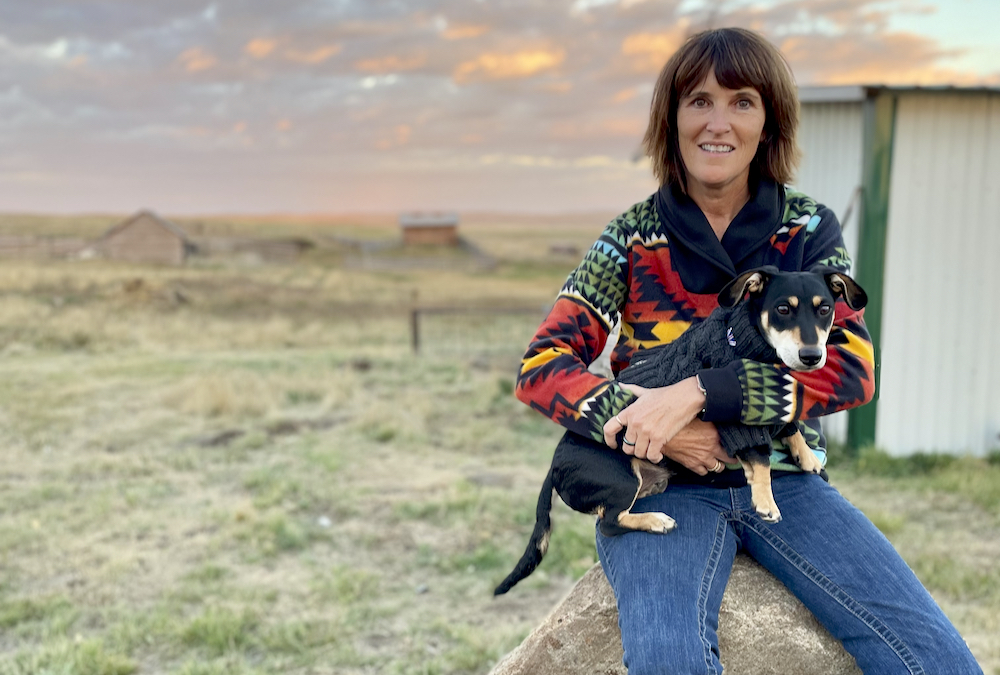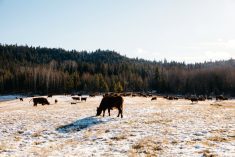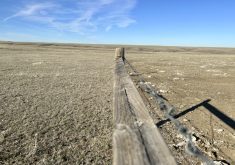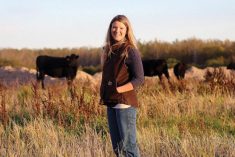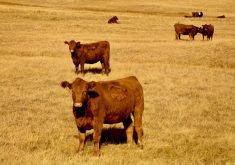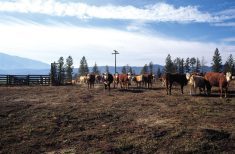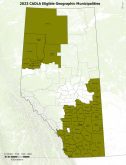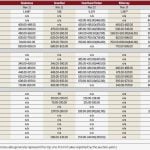There’s no sugar-coating it — 2021 was a tough year.
“The one thing you know when you’re an agricultural producer is the weather is the No. 1 thing,” said Bob Lowe, owner of Bear Trap Feeders in Nanton and president of the Canadian Cattlemen’s Association.
“We’re probably all familiar with droughts, it’s just the size of it threw everybody for a loop. Usually, if you have a drought, you go 100 miles and find some feed, but this year, we had to go to the East Coast to find feed.”
Read Also
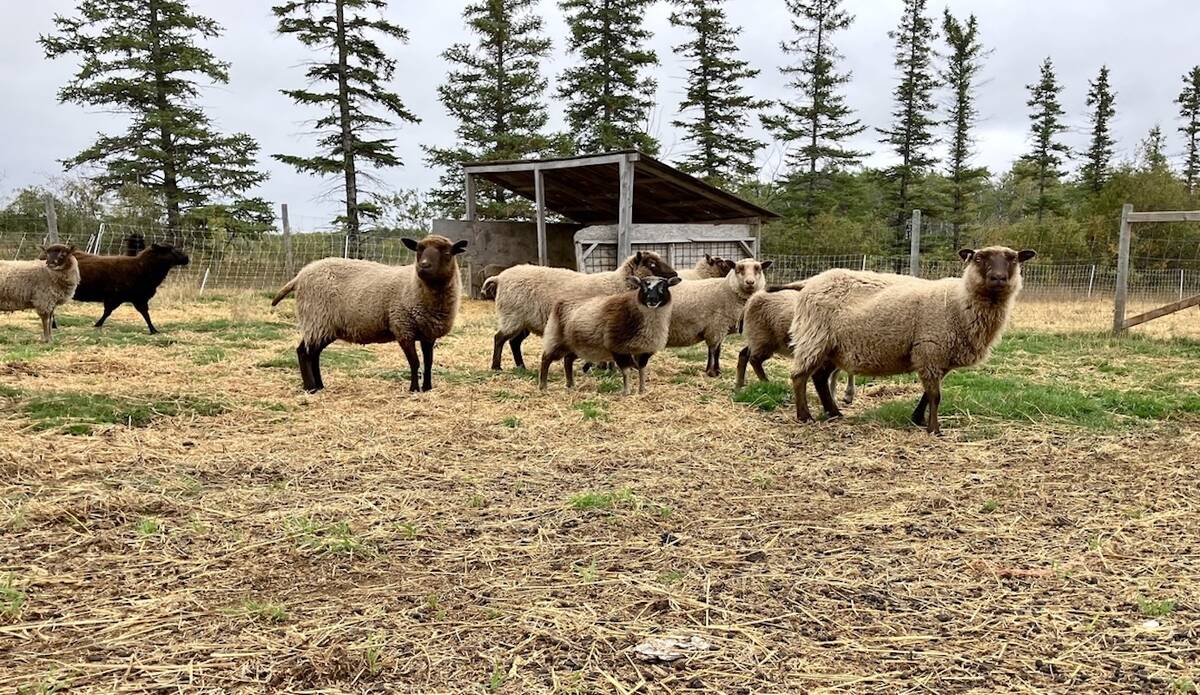
Mosquito-borne virus could be devastating to sheep breeding operations
Cache Valley virus, a mosquito-borne disease that infects small ruminants, could be a devastating hit to small operations.
The drought stretched from Vancouver Island into northern Ontario, but the intensity was localized.
“Certain areas started out really well in the spring, others started out with very little to no hope because they had no fall moisture and no run-off,” said Sheila Hillmer, a cow-calf and crop producer who farms with her husband and two adult sons near Del Bonita.
At Hillmer’s place, things looked pretty good at the beginning of the year. The dugouts were full, and crops and pastures were progressing well in the area until about May, she said.
“Then things started to dry out and we got the crops seeded and nothing really happened after that,” she said.
There was hail that came in the second week of June, and nothing grew back after that.
“That’s the first time I’ve seen it where hail basically wiped out all of our crops,” said Hillmer. “We really started to panic. We had managed the grass very well, so we had carry-over grass, but that was only going to last so long.
“We were getting pretty panicked and we got some later rains and then our crops started to regrow. We got some regrowth and we threw the cattle on that.”
Her family was lucky, she said.
“We ended up getting feed where we never thought we were going to get anything,” she said.
“I know that there are a lot more hardships out there. We’re all going through unique and difficult times, and hopefully at some point, it gets better for everyone because we need everyone to be in this business.
“It is a great way of life and we need it to be sustainable and profitable.”
The plight of Prairie cattle producers caught the attention of the nation, and also led to farmers in Eastern and Central Canada launching Hay West 2021. Organized by the Canadian Federation of Agriculture with transport paid with $4 million in federal funding (as well as donations from corporate and other sponsors), the initiative had delivered 5.6 million pounds of donated hay to 16,750 cattle by mid-December.
For some producers, Hay West made the difference between culling or selling their herd completely, said Lowe.
“I think, in agriculture, farmers help farmers. They always do,” he said. “I think it’s a given that you will help your neighbour when you can.”
Hillmer’s family didn’t have to use Hay West, but she sees a huge benefit in it.
“I think it’s great when the country pulls together and producers are willing to look after each other regardless of where they live or what they do,” she said.
However, it was massive support from the federal and provincial governments that kept the lights on — $340 million in Alberta alone. A special AgriRecovery program gave producers an initial payment of $94 per breeding female with no receipts needed. A second payment, based on a feed-cost formula, will put another $106 in their hands early in the new year.
“I don’t think I’ve ever seen government work as fast as it did this time, both federally and provincially, to get that money out,” said Lowe. “And that was a godsend. That gave the people confidence to go out and buy more feed. It showed that the governments were there and ready to back the industry.”
Hillmer and her family received money in the first round and will apply for the second one.
“It would be nice not to have to trigger those programs, but it is good to have something to offset the price of feed, for sure,” she said.
But the personal toll is another matter.
People in the cattle sector have been under a lot of stress for a long time, and that stress has compounded, said Lowe.
“We were all lined up to have a really good year two years ago, and then COVID hit and the (slaughter) plants shut down. Last year, we worked our way through COVID, and figured out how to handle it,” and then the drought occurred, he said.
One of the good things that has happened since the start of the pandemic is that producers are more willing to realize that mental health problems may affect them — and there are more resources available to them, said Lowe.
“It’s been a tough couple of years, and then it hits you and the mental stuff comes in,” he said.
Lowe has also been impressed with how the various cattle organizations and the industry players have come together during the drought.
“The cattle feeders and everyone were focused on trying to maintain the basic cow herd. The cow herd hasn’t grown since BSE,” he said.
The shrinking Canadian herd remains a major concern but much depends on what happens next year.
“I worry about people in other provinces or parts of Alberta who haven’t had moisture this year,” said Hillmer. “If we don’t get moisture next year, we’ll all be in a much bigger state of emergency and we will have to shrink this herd size significantly.”
Even if there is sufficient rain next year, a period of recovery will be needed, added Lowe.
“If we do get crop, it will take a year to build up the supply and the cushion we have,” he said. “I would encourage producers to really think hard about building their own cushion in their own operations and not relying on government to bail them out.”


